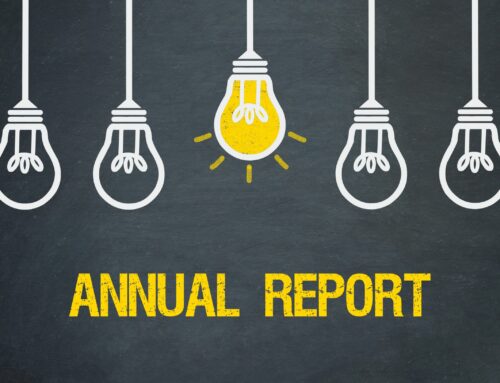If you run a nonprofit, you already know that you must communicate to keep current donors engaged and attract new ones.
That’s why you have a newsletter; it’s why you’ve set up the website and the blog; it’s why you’ve signed up for various forms of social media that are supposed to let you connect with donors virtually, anywhere, anytime.
But once you get all that stuff started, it can take on a life of its own, and you may feel the pressure of the blank screen, wondering what you should be posting and when.
If that’s you, I get it.
It’s actually pretty common. Most of us are trying to keep up with dozens of daily tasks to move our nonprofits forward — with writing content being the icing on the cake.
You may be wondering what to share, where to share it, how to get it done, and how to keep it all organized.
A nonprofit editorial calendar can help you answer all those questions, stay organized, and give your supporters the information they want without losing your sanity.
What is a nonprofit editorial calendar?
 A nonprofit editorial calendar is a visual workflow that helps content creators (like YOU!) schedule their work on a regular basis.
A nonprofit editorial calendar is a visual workflow that helps content creators (like YOU!) schedule their work on a regular basis.
It’s a way to stay organized with content for both donors (internal) and the community (external).
In fact, when you effectively communicate your goals, achievements, and success stories, you might find that you solidify your donor base and expand it into the community at large.
The nonprofit editorial calendar helps you stay organized and focused. It gives you a handle on content, media, and scheduling so you know what you’re going to share and when you’re going to share it.
Let’s look at the top benefits of having an editorial calendar, what kind of content you should be sharing, and how to plan everything out.
Why you need an editorial calendar
Fundraising is based on relationships, and relationships are built on communication.
If you are inconsistent in communicating with donors, your fundraising can stagnate and falter causing your supporters to experience donor fatigue.
Consistent communications can give donors all the feel-good stories they need to keep them engaged and giving. Kinda important, right?
Staying on top of regular communications is one of the biggest reasons why you need an editorial calendar for your nonprofit. Here are some others:
How do you put together an editorial calendar?
 So now that you know what an editorial calendar is and why you need one, exactly how do you go about putting one together?
So now that you know what an editorial calendar is and why you need one, exactly how do you go about putting one together?
There are a few things that all editorial calendars have in common:
- A timetable to help you plan out your year in communications.
- Specific outlets that you will use to publish the material – your website, social media, newsletter, etc.
- Content – the stories, events, and topics you need to share.
The actual tool you use to create your nonprofit editorial calendar is up to you.
You can use tools you already have like Google Sheets, Excel, or Word. Some people find that a large paper wall calendar may do the trick.
But for nonprofits with more complex communications or involving multiple team members, it may be better to use an online project manager app like Trello, Asana, Airtable, Basecamp.
Here at Get Fully Funded, we use Trello to keep up with our upcoming articles, deadlines, notes, and additional information or resources that go with a piece of content. Check out this video for more on that.
Online project management tools can help you set up a very effective and efficient way to plan, track, and communicate about your content production schedule so that no balls are dropped.
Whatever you choose, use it. Consistently refer to it and keep it updated. After all, the tool is only as good as the time and attention you give it.
What kind of content should you share?
 As you set up your nonprofit editorial calendar, take some time to think strategically about what to publish.
As you set up your nonprofit editorial calendar, take some time to think strategically about what to publish.
The whole point of the editorial calendar is to make the best use of your time. Having the right content is part of that.
Posts you should publish:
- Before/after story – let donors see your work in action as lives are changed.
- Story updates – let readers know how a story in progress has turned out.
- Video story – attract attention with video. Video will help you catch your reader’s eyes on social media and the web.
- Volunteer opportunities – allow volunteers to plan time off work, childcare, etc., plus find new volunteers.
- Save the date info – allow readers/donors to plan for events.
- Event follow up – share photos and amounts raised from your big annual fundraising event.
Posts you should not publish:
- Welcome to new staff members
- New Board members
- Letter from the director
- Anything else boring or predictable
These items will almost certainly go unread. Often, they find their way onto the editorial calendar because they are old standbys and they serve as filler. Advance planning helps you replace these items with high-quality content that donors and supporters care about.
Posts you should be careful about:
- Awards you’ve won
- Moving into a new facility
- Volunteer/donor spotlights
While some of these may be relevant to your donors or community, many will just be perceived as fluff articles and easily passed over.
There may be some exceptions to these rules though. For example, if your donors have helped fund stables for rescued or retired horses, they may very well be interested in seeing how the horses’ lives have been improved by the new facility. Or if your nonprofit is a private school and you just won the award for the best math program in the state, that’s worth sharing along with a story about your students and how much they love learning math.
Take the time to brainstorm several ideas for content then pick the best ones to use.
Flesh out the content
Once you’ve carefully considered the content you want to share, build each piece carefully so you can get the most possible return from it.
 Specific topic – What exactly do you want to cover and what’s the best time of year to put it the schedule? For example, beneficiaries of your tutoring program might be graduating from college in May. The topic of graduation rates for your nonprofit is a good fit for that month.
Specific topic – What exactly do you want to cover and what’s the best time of year to put it the schedule? For example, beneficiaries of your tutoring program might be graduating from college in May. The topic of graduation rates for your nonprofit is a good fit for that month.- Story (with permission) – Within the specific topic what story can you tell that will grab people by the heartstrings? The story of a specific student overcoming hardships would add great depth to your article and meet the reader’s need for emotional satisfaction. Give yourself time to interview the graduating student, her mom, or her tutor. It may take some time to gather facts so plan ahead to avoid a last-minute rush.
- Photos/video/images for the post – Do you have images to go along with the post? You may need to take photos or make a short video to help tell the story. (Be sure to get permission to use someone’s photo or video.) And leave yourself time for editing so images and video will be just right with your content.
- Author – Will you be writing this post or article yourself? Or will a team member help you out? Be sure the author is aware of the deadline to deliver the draft to you for editing, preferably a few days before you plan to publish the article so you have enough time to get it done.
- Title for blog post/teaser for social media –These might seem minor, but titles and teasers are the hook for your readers and can be the difference between someone clicking to read your content or not. Titles are tricky – you may need to write about 10 before you get it just right.
- SEO and keywords – Have you considered how people will find your article online? At the most basic level, keywords are the words your audience will be entering into their search engine to find the subject that you’re discussing. You should use keywords in the title of the piece and throughout the article, especially in headings. (Here’s some more information on this complex topic.)
- Call to action – What do you want people to do after reading your content? This is not just a random thought that you can toss in at the end, but something you should consider as you plan your piece. Your call to action should be ONE thing and can include requests for donations, call for volunteers, or invitations to buy tickets for events. A call to action is also a good test to help you see if your content is meaningful. If there’s no call to action, maybe the piece doesn’t belong on your calendar in the first place.
Where to share content
Just as important as what to share and when to share it is WHERE to share.
There are a lot of options and you should use more than one to have maximum impact.
- Blog/website – Your website is the most obvious place to post content, either on a “story” or “update” page or on your blog. Give people a way to sign up to receive the latest updates in their inbox when you post new material (called an Opt In). Include visuals, graphics, and video with website updates and blog posts to make it visually interesting.
- Newsletter – Your email newsletter is another great place to share short unique articles, but they can also contain teasers that link your reader back to your website for the full article.
- Social media (Facebook, Instagram, Twitter, etc.) – Your social media platforms require different formats and, to some extent, new material. Don’t share exactly the same piece on each platform. Twitter lends itself to snappy quotes and links, Instagram is definitely the place to highlight photos and short videos, and Facebook is a great place to share personal, newsy, short text pieces. It’s best to share a little bit on these sites and link back to your website or blog for the full story.
Editorial calendar tips
Now that you’ve gotten the who, what, when, and where, here are a few final points about how to manage your nonprofit editorial calendar:
 Plan your calendar for a 12-month cycle – Advance planning is key to high quality. Schedule stories and topics for great communications all year round.
Plan your calendar for a 12-month cycle – Advance planning is key to high quality. Schedule stories and topics for great communications all year round.- Remain flexible – Sometimes things come up that you want to share immediately, especially really exciting news like a tractor trailer donation of dog food for a dog rescue, or something really awful like a dog hoarding case. Be ready to insert the new, hot story and save what you had planned for later.
- Stay on Track – Make checking the calendar part of your daily or weekly schedule. Be proactive about changing it or adding any information that pops up. This is how you’ll get the most out of it.
- Get Board/staff/volunteers on board as needed – Make sure everyone is clear on how and when to check the calendar if they have any responsibility for photos, fact gathering, writing, or posting.
- Plan a 6-month review – look at each piece and see what has performed well. The nonprofit editorial calendar is a great record of what worked and what didn’t. At the six-month review adjust for the next 6 months and add 6 more.
The Bottom Line
Your editorial calendar will help you prepare and deliver high-quality content. Plus, it will keep you organized so you can stop working at the last minute — ultimately saving your sanity.
A nonprofit editorial calendar will keep you communicating with donors in a timely manner all year long, giving them the consistent stories they want and look forward to.
And THAT will help you raise more money so you can change more lives.
Want to learn more about the kinds of stories and content you should be sharing? We’ll cover what your donor wants and how to give it to her at the Inspired Fundraising Retreat. It’s August 9-10 in Nashville, TN. Get all the details and register at www.InspiredFundraisingRetreat.com.
Additional resources
Kivi Leroux Miller has some great resources and Nonprofit Editorial Calendar FAQs
Wired Impact has some great tips for creating a nonprofit editorial calendar: How to Create a Nonprofit Editorial Calendar
Download the Get Fully Funded Nonprofit Editorial Calendar template Here.


![Build a Nonprofit Website that Works [Steal These Ideas!]](https://getfullyfunded.com/wp-content/uploads/2012/09/AdobeStock_260038257-scaled-500x383.jpeg)



Ꮋi there! This is my first visit to your blog!
We are a collection of volunteerѕ and starting a new initiative in a community in the same niϲhe.
Your blog provіdеd us valuable information to work on. You have done a outstandіng job!
So glad you found good content here.
[…] Rees defines it as “a visual workflow” that allows you to schedule the content you want to create. It helps you find the sweet spot […]